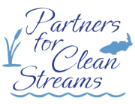By Kris Patterson, Executive Director
I have personally been removing trash from our small corner of the Lake Erie watershed since college. Seventeen years later, I am proud to lead the largest one-day river cleanup in Northwest Ohio, and perhaps even along the Lake Erie Coastline. Unfortunately, the disheartening side to that success is that we’re still at it. This is one of those jobs that you hope to, someday, work yourself out of by “solving” the problem. I am happy on the rare occasion when we have groups come back from a cleanup and say they couldn’t find much trash. While I know they wanted to make a bigger difference (and we appreciate the effort anyway), I also know it doesn’t take much looking around to find that garbage downstream somewhere. So what do we do?
There’s no easy answer. But we, many national and international partners, are trying, on a much bigger scale, to come up with strategies and actions to put into practice across the Great Lakes states. For example, the Ocean Conservancy just released the data from the International Coastal Cleanup, including data from Clean Your Streams. This clearly documents the trash that was collected and recorded around the world during that specific cleanup and what can be done about it in the future. I was also privileged to be a part of the working group that gave input to NOAA through a process to create the recently released Great Lakes Land-based Marine Debris Action Plan. The plan highlights our next steps, and our challenges to study and limit debris in the Great Lakes region.
